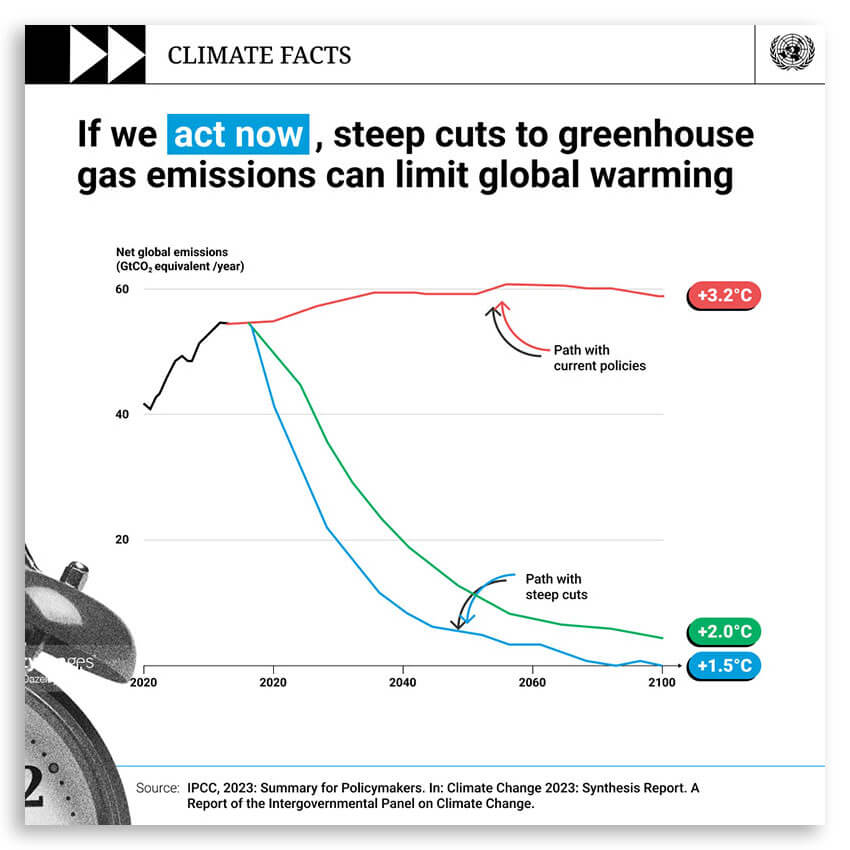Mythbusters: climate change is a hot topic – get the facts here
Climate change is a hot topic – with myths and falsehoods circulating widely. Find some essential facts here. Share them, use them and talk about them to help counter mis- and disinformation and build support for urgent action.
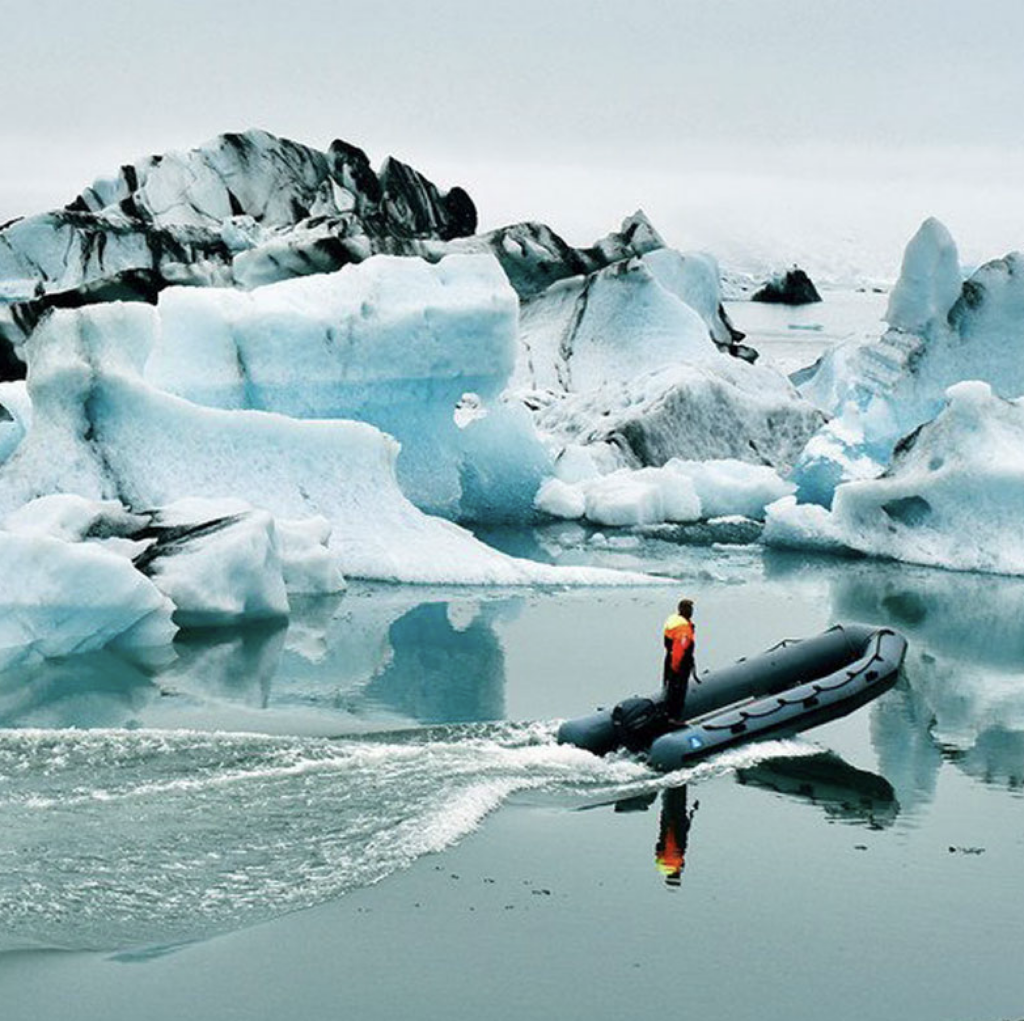
FACT: Climate change is happening
Climate change is already affecting every region on Earth. Changes in rainfall patterns, rising sea levels, melting glaciers, a warming ocean, and more frequent and intense extreme weather events are just some of the changes already impacting millions of people. (IPCC)
Climate change can affect our health, ability to grow food, housing, safety and work. Some of us are more vulnerable to climate impacts, such as people living in small island developing countries. Threats like sea-level rise and saltwater intrusion have advanced to the point where whole communities have had to relocate. In the future, the number people displaced by climate change is expected to rise.
The changes in the climate are widespread, rapid and intensifying, and some of the changes, such as sea level rise or melting ice sheets, are irreversible over hundreds to thousands of years. (IPCC)
FACT: Climate change is caused by human activity
Natural changes in the sun’s activity or large volcanic eruptions have caused ancient shifts in the Earth’s temperatures and weather patterns, but over the last 200 years, these natural causes have not significantly affected global temperatures. Today, it’s human activities that are causing climate change, primarily due to the burning of fossil fuels like coal, oil, and gas. (IPCC)
Burning fossil fuels creates a blanket of pollution trapping the sun’s heat on Earth and raising global temperatures. (Global warming then leads to other changes like droughts, water scarcity, severe fires, rising sea levels, flooding, melting polar ice, intense storms and declining biodiversity.)
The more of this pollution, such as carbon dioxide (CO2), accumulates in the atmosphere, the more of the sun’s heat gets trapped, the warmer it gets on Earth. There is a strong relationship between cumulative CO2 emissions and the increase in global surface temperature. (IPCC)
The amount of CO2 in the atmosphere has been increasing at an unprecedented rate since the Industrial Revolution, when manual labor began to be replaced by machinery fueled by coal, oil and gas. Today, the concentration of CO2 in the atmosphere is about 50% higher than in 1750, far exceeding the natural changes over at least the past 800,000 years. (IPCC)
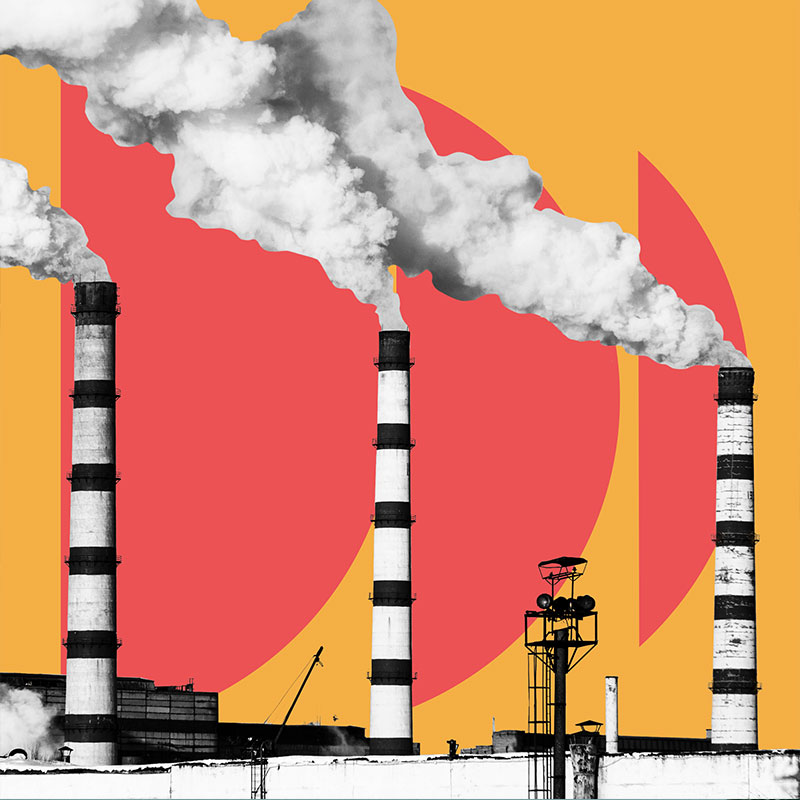
FACT: Scientists agree that humans are responsible for climate change
Multiple independent studies over the past 19 years have found that between 90 and 100 per cent of scientists agree that humans are responsible for climate change, with most of the studies finding a 97 per cent consensus.
A 2021 study found a greater than 99 per cent consensus on human-induced climate change in the peer-reviewed scientific literature (reviewed by export in the same field prior to publication) – a level of certainty similar to that of the theory of evolution.
The Synthesis Report by the Intergovernmental Panel on Climate Change (IPCC), released in March 2023, categorically confirmed that human activity is the overwhelming cause of climate change. The IPCC’s comprehensive assessments are written by hundreds of leading scientists from around the globe, with contributions from thousands of experts, and endorsed by the governments of every country in the world.
FACT: Every fraction of a degree of warming matters
Natural changes in the sun’s activity or large volcanic eruptions have caused ancient shifts in the Earth’s temperatures and weather patterns, but over the last 200 years, these natural causes have not significantly affected global temperatures. Today, it’s human activities that are causing climate change, primarily due to the burning of fossil fuels like coal, oil, and gas. (IPCC)
Burning fossil fuels creates a blanket of pollution trapping the sun’s heat on Earth and raising global temperatures. (Global warming then leads to other changes like droughts, water scarcity, severe fires, rising sea levels, flooding, melting polar ice, intense storms and declining biodiversity.)
The more of this pollution, such as carbon dioxide (CO2), accumulates in the atmosphere, the more of the sun’s heat gets trapped, the warmer it gets on Earth. There is a strong relationship between cumulative CO2 emissions and the increase in global surface temperature. (IPCC)
The amount of CO2 in the atmosphere has been increasing at an unprecedented rate since the Industrial Revolution, when manual labor began to be replaced by machinery fueled by coal, oil and gas. Today, the concentration of CO2 in the atmosphere is about 50% higher than in 1750, far exceeding the natural changes over at least the past 800,000 years. (IPCC)
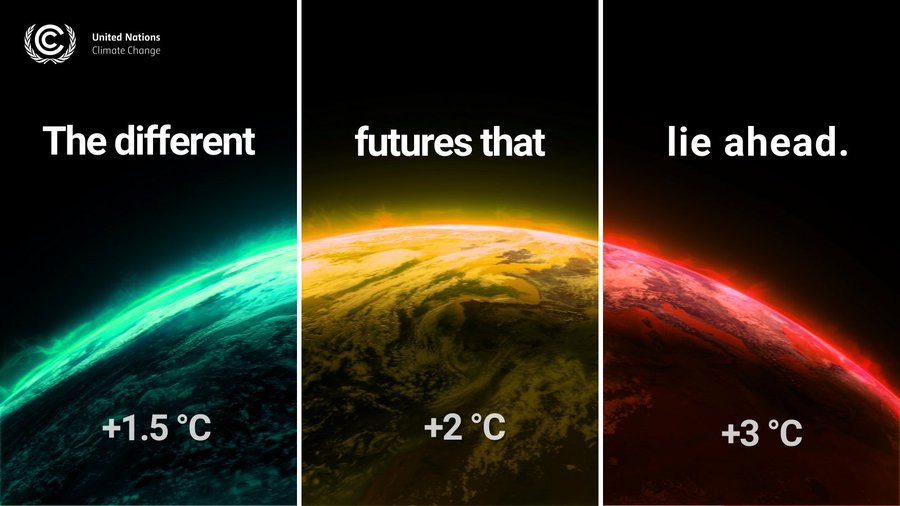
FACT:The climate is changing faster than humans, plants and animals can adapt
If global temperatures keep rising, adapting to climate change will become increasingly difficult, especially for poorer countries. A small island, for example, may become uninhabitable due to sea level rise and lack of sufficient freshwater. In that case, inhabitants may have no other option than to abandon their homes. (IPCC)
Adaptation alone cannot keep up with the impacts of climate change. Adaptation is crucial for saving lives and livelihoods, but humans’ ability to adapt to climate change is not limitless. (Insights)
Rising sea levels that submerge coastal communities and extreme heatwaves intolerable to the human body are examples of ‘hard’ limits to our ability to adapt. (UNFCCC)
With increasing global warming, losses and damages will increase and more human and natural systems will reach the limits of their ability to adapt. Many species and ecosystems are already near or beyond their adaptation limits. (IPCC)
FACT: Climate change is a major threat to people’s health
The impacts of climate change are harming human health – through air pollution, disease, extreme weather events, forced displacement, food insecurity and pressures on mental health – and will only get worse with every fraction of a degree of warming. (WHO)
The main cause of climate change – the burning of coal, oil and gas – also causes air pollution which in turn can lead to respiratory diseases, strokes, and heart attacks. More than 8.7 million people currently die every year due to outdoor air pollution. (REN21)
Replacing fossil fuel-based power plants with renewable energy, such as wind or solar farms, will greatly benefit human health. Wind turbines and solar panels do not release emissions that pollute the air or cause global warming. (REN21)

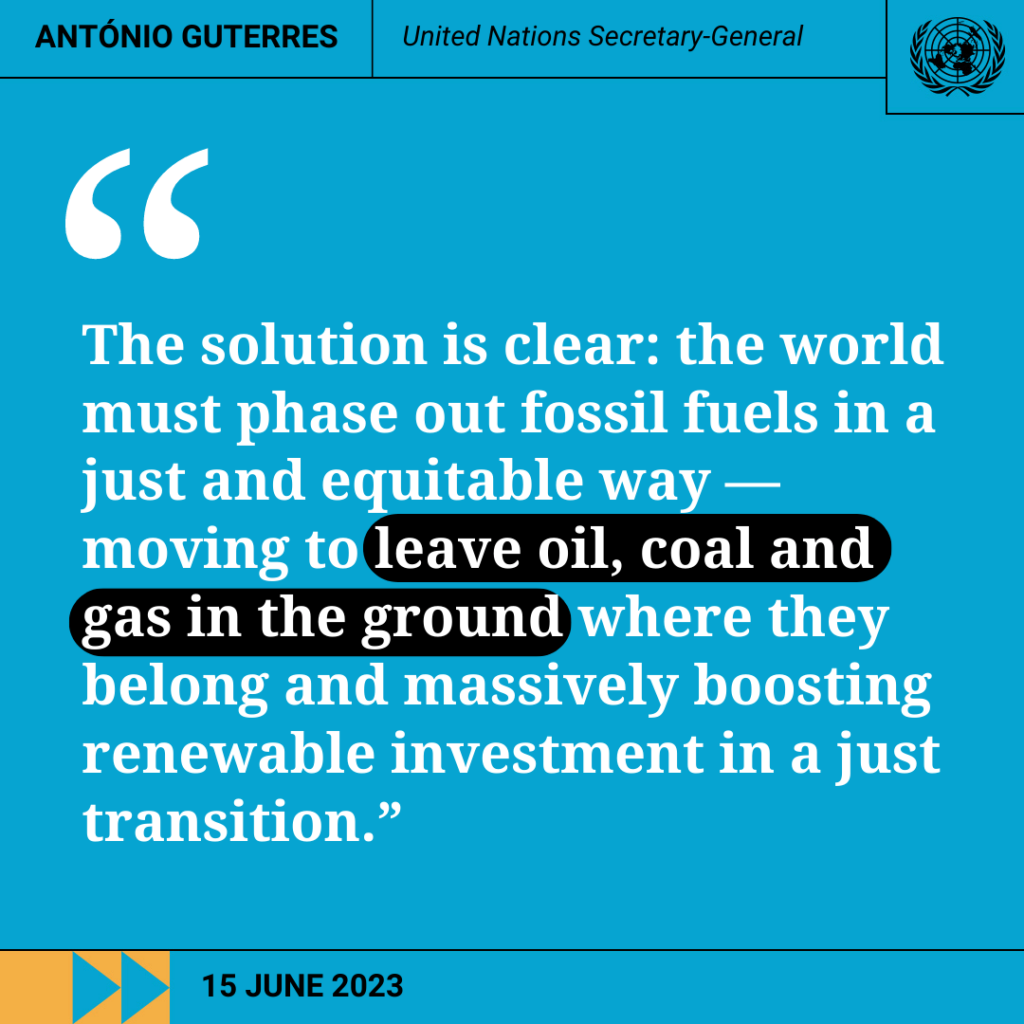
FACT: Natural gas is a fossil fuel, not a clean source of energy
Natural gas is a fossil fuel like oil and coal – formed from the remains of plants, animals, and microorganisms that lived millions of years ago. When burned, it releases carbon pollution into the atmosphere.
Burning natural gas was responsible for 22 per cent of global carbon emissions from fuel combustion in 2020 (not far behind oil, 32 per cent, and coal, 45 per cent). (IEA)
In addition, the extraction and transport of natural gas often releases methane – a powerful greenhouse gas – into the atmosphere. Natural gas production was responsible for 40 million tons of methane emissions in 2021 – about the same amount of methane emissions as from the oil industry. (IEA) (Methane is about 84 times more potent than CO2, measured over a 20-year period). (UNEP)
FACT: Clean energy technologies produce far less carbon pollution than fossil fuels
Clean energy technologies – from wind turbines and solar panels to electric vehicles and battery storage – do require a wide range of minerals and metals (IEA), and produce thus some emissions, but still far less than fossil fuels. (IEA)
Solar panels produced today only need to operate for 4-8 months to make up for their manufacturing emissions (and the average solar panel has a lifetime of around 25-30 years). (IEA). Wind turbines, similarly, take only about 7 months to produce enough clean electricity to make up for the carbon pollution generated during manufacture (and they have a typical lifespan of 20-25 years). (ScienceDirect)
Most of the carbon pollution generated during a wind turbine’s life occurs during manufacturing. Once it’s up and spinning, the turbine generates close to zero pollution. A coal or natural gas plant, in contrast, burns fuel — and releases carbon dioxide — every moment that it runs. (Yale)
Even the most carbon-intensive wind turbine is responsible for far less carbon emissions per kilowatt-hour of electricity produced than any coal or natural gas-fired power plant. (Coal-fired power plants produce 675 to 1.689 grams of CO2 per kilowatt-hour, while natural gas power plants produce 437 to 758 grams — far more than on- and offshore wind which produce, on average, 15 and 12 grams (UNECE), or even the most carbon-intensive wind turbine at 25.5 grams). (Yale)
Electric vehicles, over their lifecycle, from manufacturing to disposal, produce about half the carbon emissions of the average internal combustion engine car, with the potential for a further 25 per cent reduction with low-carbon electricity. (IEA)
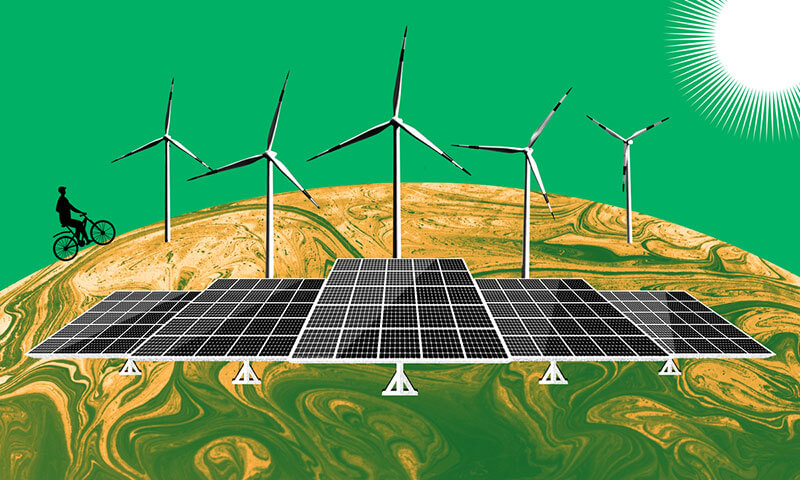
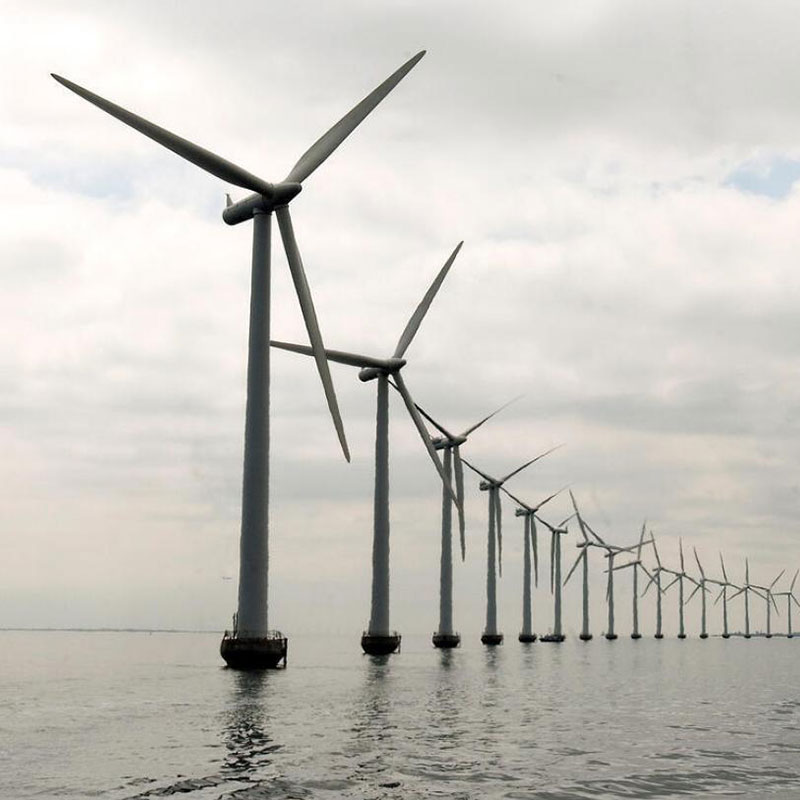
FACT: Entire countries already rely 100 per cent on renewable electricity
Costa Rica, Denmark, Norway, Iceland, Paraguay and Uruguay power their grids with hydro, geothermal, wind and solar energy. (REN21)
Some provinces and sub-national states also use 100 per cent renewables-based electricity: South Australia, Hawaii (U.S.), Quebec (Canada) and Qinghai (China), as well as the islands of Ta’u (American Samoa), Eigg (Scotland), El Hierro (Spain), Graciosa (Portugal) and King Island (Australia). (REN21)
Denmark, Scotland, South Australia and Hawaii have met more than 100 per cent of their total electricity demand with wind and solar, with some exporting their surplus. (REN21)
Other regions have generated surplus electricity with hydropower: Paraguay and Quebec both export their surplus hydropower. (REN21)
NOTE: No examples exist of fully renewable-based energy systems that span the electricity, heating, cooling, and transport sectors (the above examples cover only electricity). The foundations of such systems are now being laid, including the technologies, infrastructure and markets. (REN21)
FACT: Renewable energy will soon be the world’s top source of electricity
Renewable energy sources – such as water, geothermal, wind and solar – are available in every country, and their potential is yet to be fully harnessed.
Almost 30 per cent of global electricity comes from renewables today. (IEA)
By 2050, 90 per cent of the world’s electricity can and should come from renewable energy. (IRENA)
The world is set to add as much renewable power in the next 5 years as it did in the past 20. (IEA)
Renewables are projected to become the largest source of global electricity generation by early 2025, surpassing coal. (IEA)
In many regions, renewables are the fastest-growing energy source. (IEA)
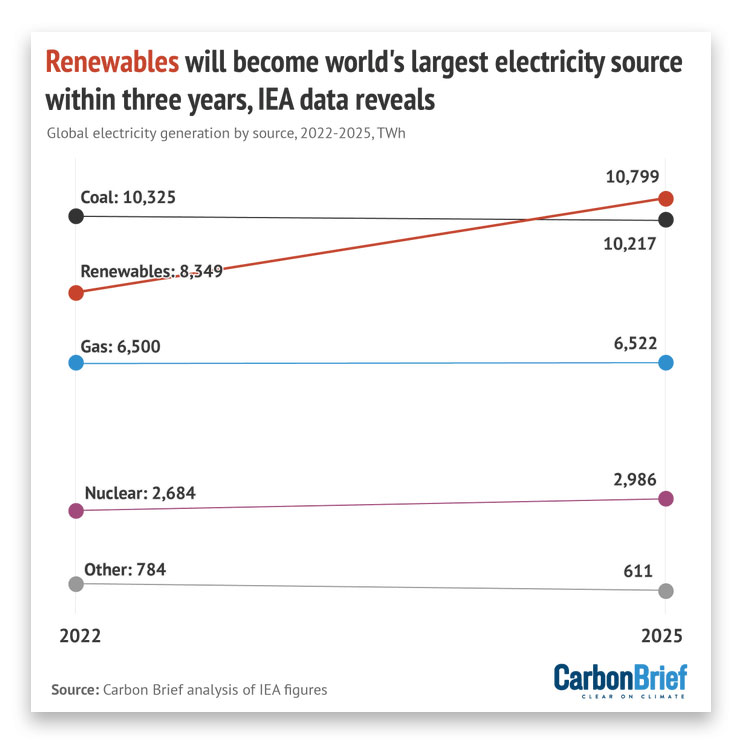
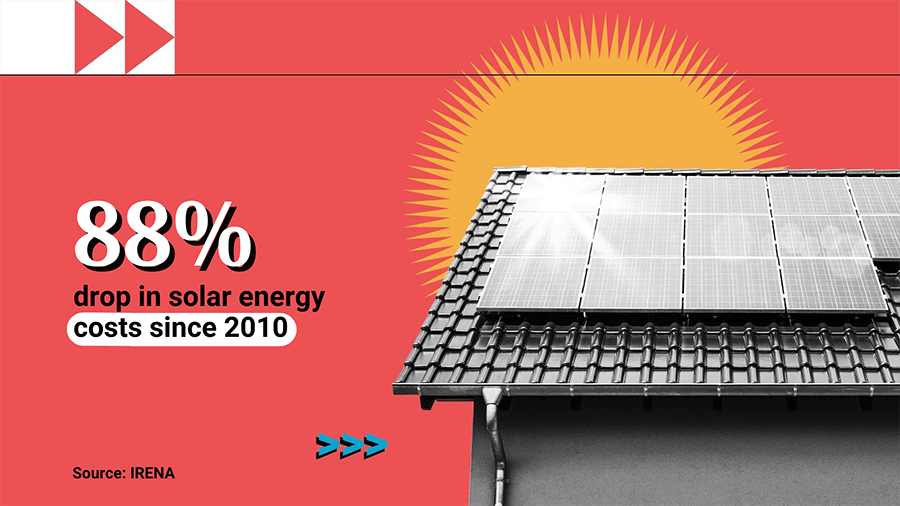
FACT: Renewable energy is cheaper than fossil fuels
In most parts of the world, electricity from new renewable-energy plants, such as wind or solar, is now cheaper than power from new fossil fuel plants. (IRENA)
New onshore wind and solar projects cost roughly 40 per cent less than coal or gas plants built from scratch—and the gap is widening. (BloombergNEF)
The world has witnessed a seismic shift in the competitiveness of renewable power options since 2010: Solar has experienced the most rapid cost reductions, with costs of newly commissioned utility-scale projects falling 88 per cent globally between 2010 and 2021 – mostly thanks to continuing technology improvements, greater economies of scale and reduced financing costs for wind and solar power plants. The cost of onshore wind fell by 68 per cent, and offshore wind by 60 per cent since 2010. (IRENA)
FACT: Solar panels and wind turbines make good use of land
All energy sources require land: from the plot used for mining coal, to the land taken up by a power plant.
Wind farms require a lot of land, but while a coal mine is used just once, a wind farm continues to produce energy, year after year. Over time, an acre of wind or solar can generate more electricity than an acre of coal or uranium mines.
Land used for solar and wind farms can be “dual-use” – used for energy production and agriculture at the same time. Once built, a solar or wind farm has so little impact on its land that it is increasingly common to allow grazing and farming on the same acres at the same time.
Solar panels do not need to be installed directly on the ground, they can be put on existing structures like rooftops, roads or parking lot canopies, over canals and on agricultural land, and even floated on lakes and ponds.
In South-East Asia and Africa, where solar projects tend to compete with agricultural land, “agrivoltaics” and “floatovoltaics” allow agricultural land and water to be “dual-used” for solar panels without compromising water and food resources. (REN21)
Solar farms can also be installed on land that is not suitable for other uses – deserts, landfills, old coal mines or contaminated territory (Chernobyl now hosts a solar plant).
Solar panels can be put anywhere on Earth because the sun shines everywhere. No other type of electricity generation can match this flexibility.
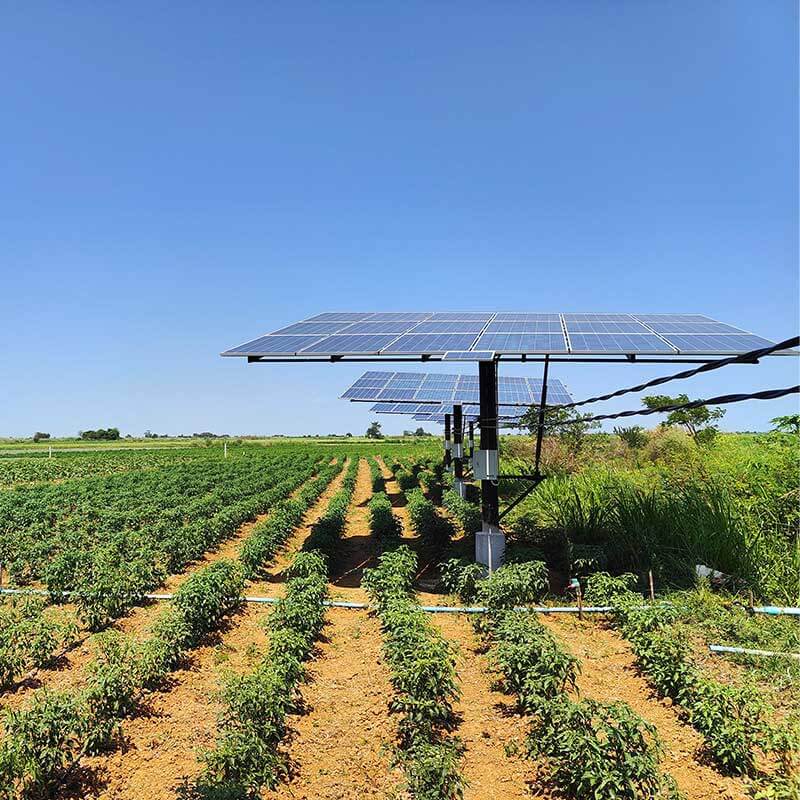
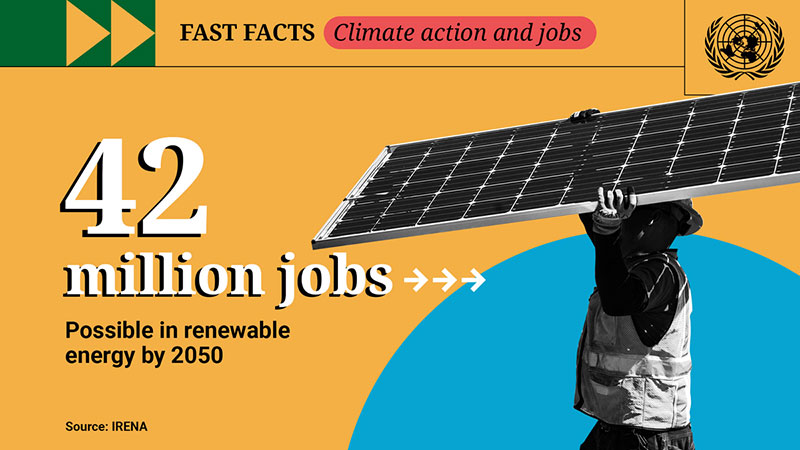
FACT: The transition to clean energy will create millions of jobs
The transition to net-zero emissions (away from fossil fuels and towards clean sources of energy) is projected to lead to an overall increase in jobs in the energy sector: about 5 million jobs in fossil fuel production could be lost by 2030, but an estimated 14 million new jobs would be created in clean energy, resulting in a net gain of 9 million jobs globally. (IEA)
The number continued to grow worldwide over the past decade, with most jobs in the solar photovoltaic, bioenergy, hydropower and wind power industries. (IRENA). The renewable energy sector employed 12.7 million people, directly and indirectly, in 2022, up from about 7.3 million in 2012. (IRENA)
Tens of millions of additional jobs will likely be created in the coming decades as investments grow and installed capacities expand. By 2050, the renewable energy sector is expected to employ at least 42 million people. Energy efficiency measures would create 21 million additional jobs and system flexibility 15 million additional jobs. (IRENA)
Every dollar of investment in renewables creates three times more jobs than in the fossil fuel industry. (SG)
FACT: Entire countries already rely 100 per cent on renewable electricity
The choices we make today will determine the changes in the climate we will experience in the future. (IPCC)
Large and sustained reductions in emissions of carbon dioxide and of other greenhouse gas emissions would limit climate change. (IPCC)
If we act now, we can limit climate change and preserve a livable planet.
We have the knowledge, tools and resources to secure a livable, sustainable future for all.
